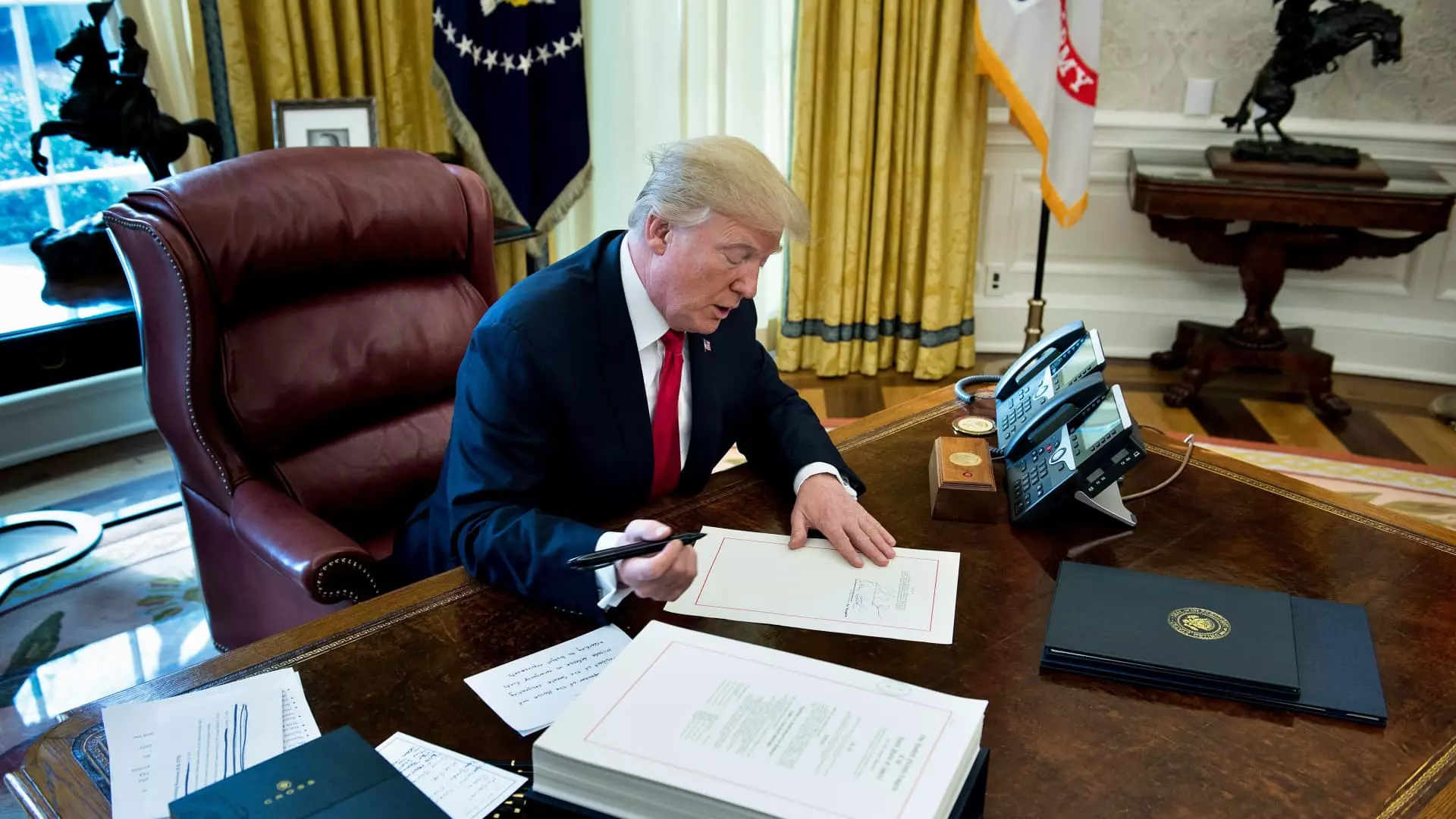As we approach the 2025 tax year, investors are facing a period fraught with uncertainty and potential change. The dialogue surrounding tax policy is revitalizing as Congress gears up to deliberate on President-elect Donald Trump’s economic agenda. Historical precedents provide insights into navigating current tax uncertainties and the importance of strategic planning derived from past tax reforms, particularly the Tax Cuts and Jobs Act (TCJA) established in 2017.
The TCJA marked a pivotal moment in the tax landscape of the United States, introducing extensive changes aimed at simplifying the tax process while purportedly fostering economic growth. Since its implementation, Donald Trump has consistently advocated for the continuation of its benefits, which encompass a plethora of tax breaks amounting to trillions of dollars. This overarching ambition aligns with his campaign promises to secure a tax-friendly environment for individuals and corporations alike.
However, with the impending expiration of several key provisions in 2025, including lower tax rates and enhanced deductions, the landscape for taxpayers remains uncertain. Trump’s proposal to eliminate taxes on tips, exempt Social Security benefits for seniors from taxation, and abolish the $10,000 limit on state and local tax (SALT) deductions highlight his commitment to extending the benefits of the TCJA. Yet, the crux of the matter lies in whether Congress will effectively translate these proposals into legislation amidst fiscal constraints.
As uncertainty looms large, financial strategists are left to contend with planning complexities regarding tax changes. Investors can glean valuable insights from the TCJA experience, particularly the swift execution of tax regulation changes that characterized its passage. The method of “reconciliation” previously utilized by Republicans to enact the TCJA could emerge once again as negotiations unfold in Congress, potentially allowing for rapid legislative reforms.
One significant lesson learned from 2017 is the merits of timely action. In anticipation of the TCJA’s introduction, many investors undertook strategic moves—such as prepaying property taxes to maximize tax deductions before the changes took effect. This retrospective highlights the importance of proactive planning in tax decisions, especially as Congress contemplates extending or amending current deductions.
Amidst this backdrop, financial advisors are urging clients to approach tax planning with caution. Certified public accountant Ryan Losi stresses the importance of relying on established tax laws rather than speculative propositions that may arise from legislative negotiations. This prudent approach encourages clients to explore potential avenues for reducing taxable estates, particularly in light of the possible expiration of elevated estate tax exemptions.
The projected increase in the basic exclusion amount to roughly $13.99 million per person in 2025 is significant; however, its future remains uncertain without congressional action. The ramifications of such changes necessitate that individuals consider their estate planning strategies sooner rather than later, avoiding last-minute scrambles that characterized the TCJA’s implementation.
As the conversation surrounding tax reform evolves, the lessons extracted from Trump’s 2017 tax overhaul serve as a roadmap for future planning. Financial experts advise a dual approach that emphasizes awareness of current laws while simultaneously preparing for potential alterations in the tax code. The unpredictability of Congress’s direction raises the risk of retroactive changes that could impact investment decisions.
Moreover, the fleeting nature of tax benefits accentuates the necessity for adaptability. Last-minute tax strategies, while valuable, can also lead to confusion and may not account for prolonged repercussions. Investors should thus maintain a vigilant stance and remain informed about ongoing legislative developments to ensure their financial decisions remain aligned with their long-term goals.
As we glance toward the horizon of 2025 and beyond, the lesson is clear: while the tax landscape remains mired in uncertainty and debate, investors and financial professionals can extract substantial insights from previous reforms. Leveraging proactive strategies, maintaining open communication with advisors, and being prepared for potential legislative shifts can position investors favorably in the face of change. While the future of tax policy under a Republican-controlled Congress may offer prospects for tax relief, the essence of strategic planning lies in adaptability and preparedness for whatever may come next.

